 W
WTo assist in the decolonization process of the Spanish Sahara, a colony in North Africa, the United Nations General Assembly in 1975 dispatched a visiting mission to the territory and the surrounding countries, in accordance with its resolution 3292.
 W
WOperation Rattle, also known as the 1991 Tifariti offensive, was the last military operation in the Western Sahara War by the Royal Moroccan Army against the Polisario Front, seeking independence for Western Sahara. A ceasefire had been agreed between the parts on July. During August and the first days of September 1991, the Royal Moroccan Army (RMA) conducted offensive operations in the areas of Mehaires, Tifariti, Bir Lahlou, Mijek and Agwanit, resulting in multiple Sahrawi civilian casualties, the destruction of Tifariti and Bir Lahlou, poisoning of the wells and subsequently depopulation of the area.
 W
WThe 2020 Western Saharan clashes, also called the Guerguerat crisis and Moroccan military intervention in Guerguerat is an armed conflict between Morocco and the self-proclaimed Sahrawi Arab Democratic Republic (SADR), represented at the United Nations by the Polisario Front, in the disputed region of Western Sahara. It was the latest escalation of an unresolved conflict over the region, which is largely occupied by Morocco, but 20–25% of which it is administered by the SADR. The violence ended a ceasefire between the opposing sides that had held for 29 years in anticipation of referendum on self-determination that would have settled the dispute. Despite the establishment of the United Nations Mission for the Referendum in Western Sahara in 1991, the referendum was never held.
 W
WThe International Court of Justice Advisory Opinion on Western Sahara was a 1975 advisory, non-binding opinion by the International Court of Justice (ICJ) of two questions presented to it by the UN General Assembly under Resolution 3292 regarding the disputed territory of Western Sahara. Morocco had approached the UN to adjudicate its and Mauritania’s claims over the territory.
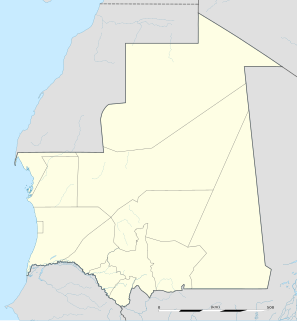 W
WAin Ben Tili is a small village-fort in northeast Mauritania, on the border with Western Sahara. It is part of the Tiris Zemmour region.
 W
WThe Almoravid dynasty was an imperial Berber Muslim dynasty centered in Morocco. It established an empire in the 11th century that stretched over the western Maghreb and Al-Andalus. Founded by Abdallah ibn Yasin, the Almoravid capital was Marrakesh, a city the ruling house founded in 1062. The dynasty originated among the Lamtuna and the Gudala, nomadic Berber tribes of the Sahara, traversing the territory between the Draa, the Niger, and the Senegal rivers.
 W
WThe Baker Plan is a United Nations initiative to grant self-determination to Western Sahara. It was intended to replace the Settlement Plan of 1991, which was further detailed in the Houston Agreement of 1997.
 W
WAfonso Gonçalves Baldaia was a 15th-century Portuguese nautical explorer. He explored much of the coast of Western Sahara in 1435–1436 on behalf of the Portuguese prince Henry the Navigator. He would later become one of the first colonists of Terceira Island in the Azores.
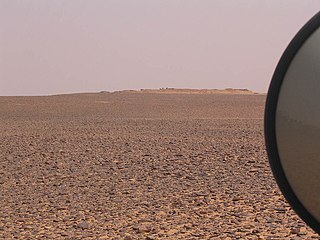 W
WThe Battle of Al Mahbes was fought on 14 October 1979 during the war in Western Sahara. The Polisario Front annihilated a battalion of the Royal Moroccan Armed Forces.
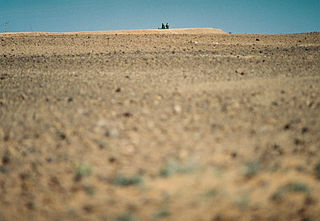 W
WThe Battle of Mahbes was fought on 12 January 1985 during the Western Sahara War. As part of its Grand-Maghreb offensive, the Polisario Front, with heavy means, breaks through the wall of sand defended by the Royal Moroccan armed forces.
 W
WDon Emilio Bonelli y Hernando was a Spanish military officer, author, explorer, colonial administrator and Africanist.
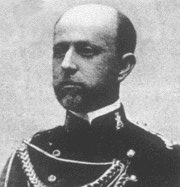 W
WJulio Cervera Baviera was a Spanish engineer, pioneer in the development of radio, educator, explorer, and military man. He also authored various scientific and geographic books and articles.
 W
WThe First Battle of Amgala was fought between 27 and 29 January 1976 around the oasis of Amgala, Western Sahara, about 260 kilometres (160 mi) west of the border with Algeria. Units from the Algerian Army were attacked by units from the Royal Moroccan Armed Forces on the night of 27 January. The Algerians withdrew after fighting for 36 hours. However, the retaliation came fairly soon, between 13th and 15th February 1976 Polisario units defeated Moroccan troops in the second Amgala battle.
 W
WMariano Gómez-Zamalloa y Quirce was a Spanish military officer and colonial administrator.
 W
WGreater Morocco is a label historically used by some Moroccan nationalist political leaders protesting against Spanish, Portuguese, Algerian and French rule, to refer to wider territories historically associated with the Moroccan sultan. Current usage most frequently occurs in a critical context accusing Morocco, largely in discussing the disputed Western Sahara, of irredentist claims on neighbouring territories.
 W
WGuelta Zemmur is a small town or village in the Moroccan-administered part of the territory of Western Sahara.
 W
WThe Ifni War, sometimes called the Forgotten War in Spain, was a series of armed incursions into Spanish West Africa by Moroccan insurgents that began in October 1957 and culminated with the abortive siege of Sidi Ifni.
 W
WThis is a list of European colonial administrators responsible for the territory of Spanish Sahara, an area equivalent to modern-day Western Sahara.
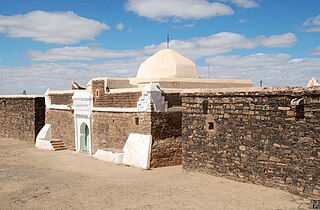 W
WMohamed Mustafa Ma al-'Aynayn was a Saharan Moorish religious and political leader who fought French and Spanish colonization in North Africa. He was the son of Mohammed Fadil Mamin, and the elder brother of shaykh Saad Bouh, a prominent marabout in Mauritania.
 W
WThe Sahrawi National Union Party, or Partido de Unión Nacional Saharaui (PUNS), was a short-lived political party set up by Francoist Spain to rally indigenous support in its rebellious Spanish Sahara colony.
 W
WThe Second Battle of Amgala, also called Amgala II or Amgala 2, took place on 14 February 1976 in the Amgala Oasis in Western Sahara. It pitted the Moroccan troops, who lost Amgala, to the forces of the Sahrawi People's Liberation Army, the armed wing of the Polisario Front, supported by the Algerian army. According to Maurice Barbier, the Moroccan garrison in the city was entirely decimated.
 W
WThe Settlement Plan was an agreement between the ethnically Saharawi Polisario Front and Morocco on the organization of a referendum, which would constitute an expression of self-determination for the people of Western Sahara, leading either to full independence, or integration with the Kingdom of Morocco. It resulted in a cease-fire which remains effective to this day, and the establishment of the MINURSO peace force to oversee it and to organize the referendum. The referendum never occurred.
 W
WSpanish Sahara, officially the Province of the Sahara between 1958 and 1976, was the name used for the modern territory of Western Sahara when it was occupied and ruled by Spain between 1884 and 1976. It had been one of the most recent acquisitions of the Spanish Empire as well as one of its last remaining holdings, which had once extended from the Americas to the Spanish East Indies.
 W
WSpanish West Africa was a grouping of Spanish colonies along the Atlantic coast of northwest Africa. It was formed in 1946 by joining the southern zone of the Spanish protectorate in Morocco, the colony of Ifni and the colony of Spanish Sahara into a single administrative unit. Following the Ifni War (1957–58), Spain ceded the southern protectorate to Morocco and created separate provinces for Ifni and the Sahara in 1958.
 W
WTiris al-Gharbiyya was the name for the area of Western Sahara under Mauritanian control between 1975 and 1979.
 W
WThe United Nations Mission for the Referendum in Western Sahara is the United Nations peacekeeping mission in Western Sahara, established in 1991 under United Nations Security Council Resolution 690 as part of the Settlement Plan, which had paved way for a cease-fire in the conflict between Morocco and the Polisario Front over the contested territory of Western Sahara.
 W
WThe Western Sahara War was an armed struggle between the Sahrawi indigenous Polisario Front and Morocco from 1975 to 1991, being the most significant phase of the Western Sahara conflict. The conflict erupted after the withdrawal of Spain from the Spanish Sahara in accordance with the Madrid Accords, by which it transferred administrative control of the territory to Morocco and Mauritania, but not sovereignty. In late 1975, the Moroccan government organized the Green March of some 350,000 Moroccan citizens, escorted by around 20,000 troops, who entered Western Sahara, trying to establish a Moroccan presence. While at first met with just minor resistance by the POLISARIO, Morocco later engaged a long period of guerrilla warfare with the Sahrawi nationalists. During the late 1970s, the Polisario Front, desiring to establish an independent state in the territory, attempted to fight both Mauritania and Morocco. In 1979, Mauritania withdrew from the conflict after signing a peace treaty with the POLISARIO. The war continued in low intensity throughout the 1980s, though Morocco made several attempts to take the upper hand in 1989–1991. A cease-fire agreement was finally reached between the Polisario Front and Morocco in September 1991. Some sources put the final death toll between 10,000 and 20,000 people.
 W
WThe Years of Lead was a period of the rule of King Hassan II of Morocco, from roughly the 1960s through the 1980s, marked by state violence and repression against political dissidents and democracy activists.